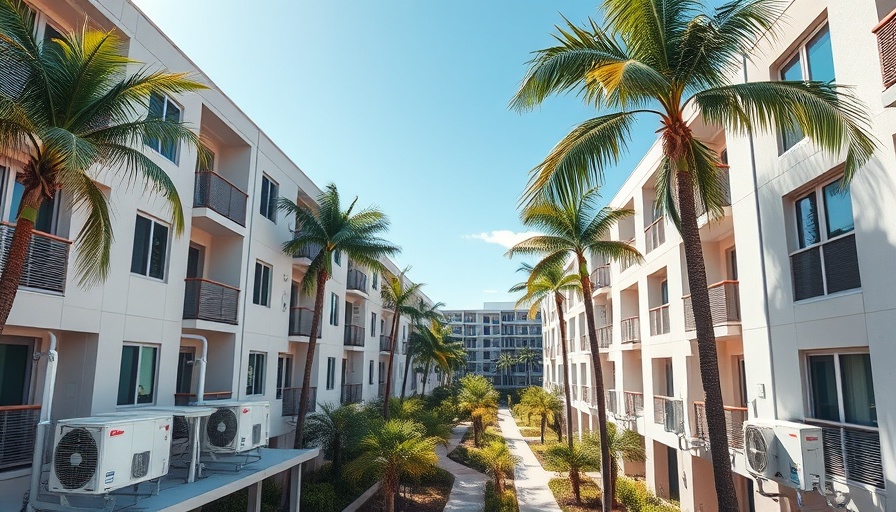
Understanding HVAC Options for Multifamily Living in Florida
As the demand for efficient and effective heating, ventilation, and air conditioning (HVAC) systems increases in the multifamily housing sector, especially in Florida, developers and contractors face the challenge of choosing the best technology. The climate in Florida necessitates reliable cooling systems, creating a wide array of options, from PTAC (Packaged Terminal Air Conditioners) to VRF (Variable Refrigerant Flow) systems.
Exploring Various HVAC System Types
PTAC units are popular in many multifamily buildings due to their individual control capabilities, allowing tenants to regulate their temperatures without affecting neighboring units. However, their cooling capacity can be limited in larger spaces, which is why VTAC (Vertical Terminal Air Conditioners) may serve as an alternative. VTAC systems can offer a more compact solution and are tailored for specific building designs.
On the other hand, VRF systems have gained traction for their energy efficiency and advanced cooling capabilities. They allow for individual zone control and integrate with smart home technologies, appealing to modern tenants who expect not just comfort but also convenience.
The Benefits of Choosing Energy-Efficient Systems
Energy efficiency is a key factor in today’s HVAC choices. With rising energy costs and environmental concerns, opting for systems like VRF not only reduces monthly utility bills but also aligns with the increasing demand for sustainable living spaces. As reported in various environmental technology assessments, implementing VRF systems can result in a significant reduction in energy consumption for heating and cooling when compared to traditional methods.
Concerns About Initial Investment vs. Long-Term Savings
One of the ongoing debates when selecting an HVAC system revolves around the initial investment versus potential long-term savings. While systems such as VRF are more expensive upfront, their efficiency can lead to lower operating costs over time. This financial consideration is crucial for developers aiming to offer appealing amenities without compromising profitability.
Consulting the Right Professionals
Choosing the right HVAC system also requires collaborating with knowledgeable professionals who understand the complexities of Florida's climate and regulatory standards. An expert HVAC consultant can assess which system best suits the building's layout, tenant needs, and energy compliance requirements, ensuring that decisions are informed and effective.
A Future-Focused Perspective on HVAC Technologies
Looking ahead, as technology continues to evolve, we may see further advancements in HVAC innovations. Integration with IoT (Internet of Things) devices and enhanced smart home compatibility promises to make HVAC systems more user-friendly and efficient. Embracing these technologies can provide a competitive edge in the multifamily housing market, attracting environmentally-conscious tenants.
As the discussion surrounding HVAC technologies in Florida grows, it's essential to weigh all options carefully. Consider not just the immediate cooling needs but also long-term sustainability and efficiency. By prioritizing these factors, multifamily developers can make choices that elevate the living experience and align with future trends in residential technology.
 Add Row
Add Row  Add
Add 






Write A Comment